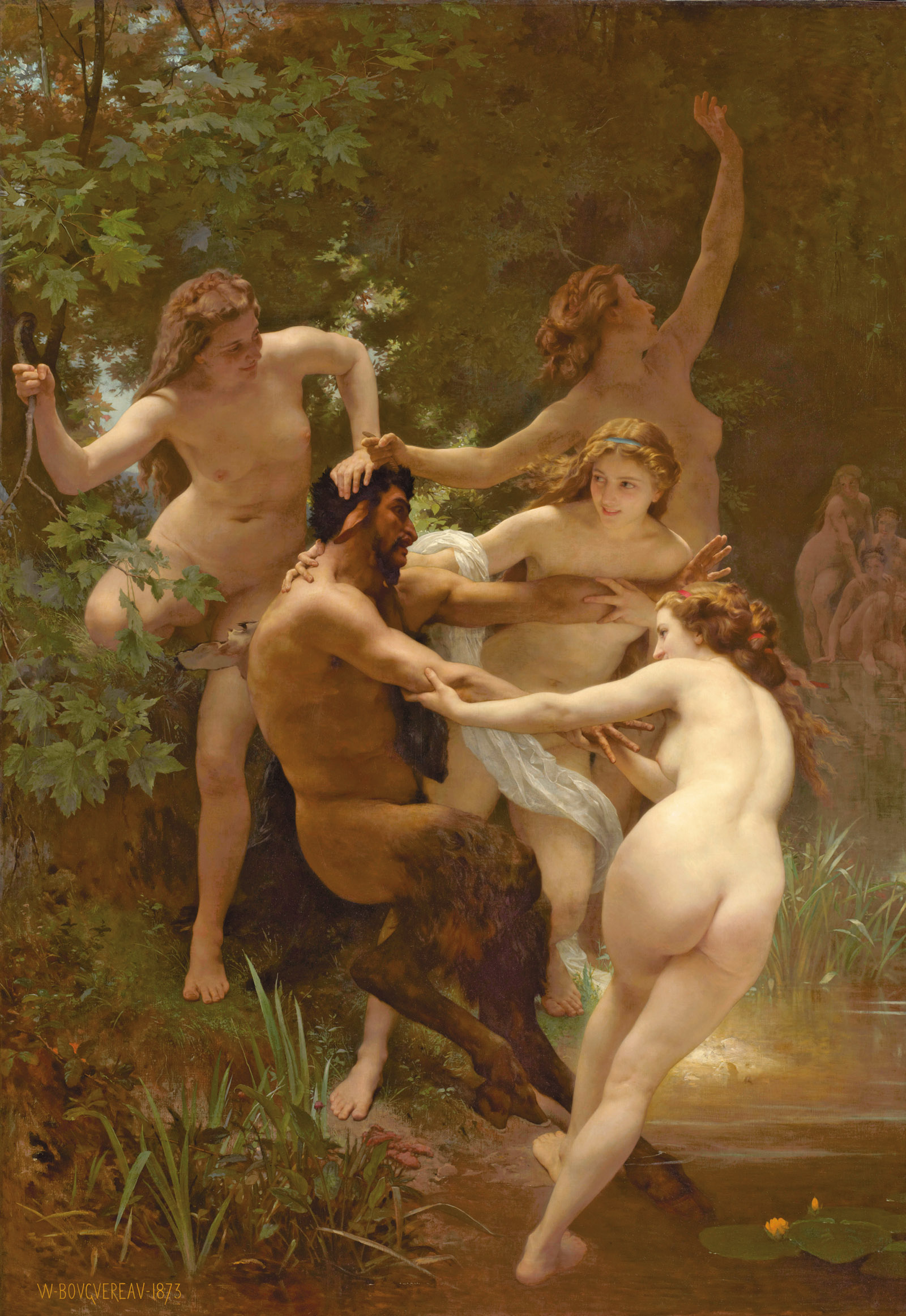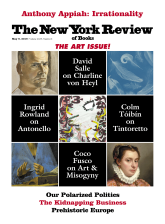Derided paintings of past centuries have a knack for hanging in there, in the teeth of critical disdain. Sir Edwin Landseer’s The Monarch of the Glen (1851), a portrait of a magnificent stag, much mocked as the staple of the Victorian parlor wall, turns up still as a label on a whiskey bottle. Bubbles (1886) by Sir John Everett Millais began as a meditation on a child’s view of the transient world but soon turned into a soap advertisement, with the name of the manufacturer incorporated into the painting. Jean-Léon Gérôme’s Snake Charmer (circa 1879), in which a nude boy, seen from the rear, displays his control over what appears to be an enormous boa constrictor in the midst of some Turkish or Egyptian architectural pastiche, was a brilliant choice for the cover of Edward Said’s Orientalism. Not that Said had anything to say about Gérôme, or about this picture. But the image comes with such a strong whiff of exploitation—cultural or sexual—that it feels as if it is part of the argument (whatever the argument is).
Memorable images, easily grasped and capable of exerting a strong popular appeal—these are the qualities of the paintings known in France as belonging to the juste milieu, the middle of the road. Writing in these pages in 1982, Charles Rosen and Henri Zerner set out the painterly characteristics of the juste milieu: forms must be clear and unambiguous, nothing fuzzy or imprecise. The subject, not the handling, is paramount. They quote the critic Léon Rosenthal to the effect that interest in such works “does not depend on…aesthetic merit, but on the scene represented: the painter must be a clever dramatist, a good costume designer, an adroit stage director.”
Rosen and Zerner tell us that the principal painters of the juste milieu (Delaroche, Horace Vernet, and Léon Cogniet), “who were enormous favorites with the public in the 1830s and 1840s,…had largely been discredited by 1900.” But that turns out to have been far from the end of the story. Famous works disappeared from view, and disappeared so completely that they were believed lost. Then, to general surprise, they were discovered again, put back on display, and were found, to further surprise perhaps, to have lost none of their power to seduce.
This is what happened to an enormous canvas by Delaroche, The Execution of Lady Jane Grey (1833). It was believed to have been destroyed in a 1928 storm that flooded the Tate Gallery in London. But decades later a search in the Tate for a quite different work, by the visionary painter John Martin, revealed the ruined Martin canvas, rolled up, for some reason, inside the perfectly preserved Delaroche, as if the Delaroche had been considered a sort of wrapping paper. The canvas was returned to its proper home, the National Gallery, where it was cleaned and rehung and became immensely popular. It is still one of the most popular paintings in the collection.
-
*
“The Unhappy Medium,” The New York Review, May 27, 1982; reprinted as “The Juste Milieu and Thomas Couture” in Charles Rosen and Henri Zerner, Romanticism and Realism: The Mythology of Nineteenth-Century Art (Viking, 1984), pp. 117–118. ↩






